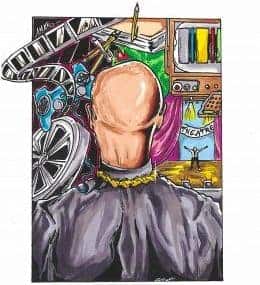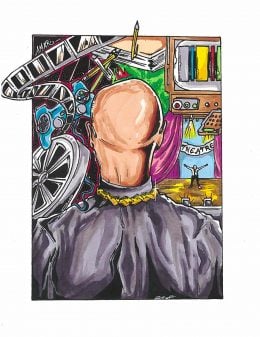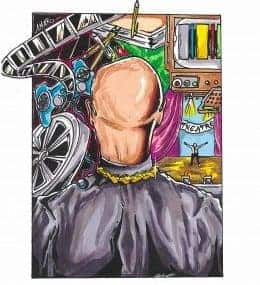13th – Overview/ Review (with Spoilers)
In many ways, 13TH is like some of the posts you see on social media in which a blogger tries to break down how racism in America works. But rather than names only known on the internet, the sources of their material are trying to educate you the best they can. Trigger Warning(s): Racism (Violence…

Spoiler Alert: This summary and review contains spoilers.
Additionally, some images and text may include affiliate links, meaning we may earn a commission or receive products if you make a purchase.
In many ways, 13TH is like some of the posts you see on social media in which a blogger tries to break down how racism in America works. But rather than names only known on the internet, the sources of their material are trying to educate you the best they can.
Trigger Warning(s):
Racism (Violence Against Black People), Rape Scenes, Images of brutalized or shot bodies and scenes of police and correctional officer brutality
Review (with Spoilers)
We live in a world where the methods used by middle schoolers, high schoolers, and maybe some college kids, to write one-sided reports, are used to make arguments. Thus sometimes leaving us misled by the latest headline or new flash, especially as the person behind the report has a Hitler-like charisma which can make you think the victim is the criminal. Yet in 13th, there is a serious attempt to remind you that not only is racism systematic in America but there is so much built off of it that even with slavery, theoretically gone, in many ways, it is still the life’s blood of the United States of America.
Characters & Story
With 2.3 million people in the American prison system, the United States has a bigger prison population than many of the countries we damn for human rights violations. What makes things worse, though, is it wasn’t necessarily always like this. Now, like many a documentary about the prison industrial complex, racism, and things of that nature, the documentary largely focuses on Black men and sprinkles in a woman every now and then and, briefly in comparison, speaks on the Latino population.
Thus creating a documentary which tries its best to establish why Black men are 6.2% of the American population but make up nearly half of the American prison system population. It begins with the end of slavery and the crafting of the violent criminal imagery of the dangerous Black male. Leading to what could be considered Minority Report type of prevention methods – i.e. lynchings. From there we have conversations about how coded language is used by politicians ranging from Nixon to Donald Trump, how companies like ALEC come up with legislation which benefits companies who profit from the prison industrial complex and, in the end, the documentary is all about how one line in the 13th amendment has been continuously exploited in order to maintain some sort of status quo to predominately oppress, run off, and assassinate those who seek equality, justice, or freedom of expression.
Highlights
Breaks Things Down
I won’t claim to be “Woke” but I am aware. With that said, while the name and imagery of Emmett Till is familiar, while the many names which have become hashtags were familiar, while the evils of the Nixon and Reagan administration were familiar, there was still a lot to learn and absorb. Be it what the Clintons did in the 90s which added onto what republicans before them caused, how coded language has worked over decades, and how much of the economy really does rely on Black men, and people of color in general, being put in a position of poverty.
I mean, just take the prison system. The millions, nearly billions, made off keeping people isolated from society is ridiculous. For whether it is clothing companies or those who produce food, or the private prison companies which literally are employing hundreds or thousands. You see how reliant certain locations probably depend on the prison industrial complex for it is like a factory. One in which if you change the laws, try to cut down on the use of prisons, the bail system, and it being privatized, so could collapse an entire industry and take jobs along with it. Yet, thanks to the resiliency of the system, it seems always prepped to exploit the government in continuing some form of slavery.
Criticism
What About Women of Color, Latinos, and Queer People of Color?
One thing which always sort of bugged me when the topic of racism, the prison industrial system, and things of that nature pop up, is that Black men are usually the focal point and breadcrumbs are thrown to everyone else. It’s like in recent times. The name of Black men killed by police is going to become a well-known hashtag but Black women, Latinos, or even queer people of color? Maybe you may see a post here and there, but they fade away quickly and aren’t put in rotation on news stations.
So with Ava DuVernay being the director, you would have thought that we would have got something beyond that. For while the incarceration of women hasn’t exploded as much as men, it still is important right? Surely the stories of Angela Davis and Assata Shakur could have been paired with Marissa Alexander as the Stand Your Ground law was discussed. Surely the Stonewall riots could have been thrown in when it comes to how the system oppresses, jails, and exploits the disenfranchised of the country. It doesn’t always have to be about Black men and make it seem we are the ones whose suffering sets the baseline.
While It Has opposing Opinions, their voice isn’t given equal time
On that note, another issue is that the documentary sadly has stooges to present a counter argument. One being for ALEC who seems incapable of a real rebuttal when the company is being criticized. Which I hate for they also did that in Blackfish and it is like, why even bring a person on if they seem like a low-key idiot or automated response system? You could get a better reply from Siri than these people.
But it isn’t just when it comes to people and situations like that. One of the pundits asks whether we must see dead bodies on the news and they speak on how uncomfortable it is, and the argument against showing the bodies is quickly cut off and drowned. After all, death and abuse in media drives human sympathy. Which is true, but with the use of a stooge and it always looping around to the plight of Black men, there was such a strong desire for opinions and voices which didn’t seem like a monolith. At least in terms of topics like seeing dead bodies heralded on the news more than successful Black men or even touching on whether the BLM matter movement is better or worse without having leaders like Martin Luther King Jr., among the many others, arise from it.
Overall: Mixed
With so many outlets for a lot of the information like John Oliver, Rachel Maddow, and more, of which this documentary uses footage from, at times this just feels like a concise, almost school ready, version of all the information out there. However, while the information is easily digestible, when it comes to some topics you do feel they place a dunce to give an opposing opinion. That or they don’t give the opposing opinion a platform to really give their side. For the argument of not posting dead bodies up on the news is a valid one. The idea that Black people are vulnerable because we don’t have leaders like Martin Luther King Jr., Malcolm X, Assata Shakur, or Fred Hampton is something that would have been nice to explore. But, alas, the focus here is more so to inform than incite conversation. Hence why when someone goes off topic, or seems to differ in opinion from the rest, they are as quickly squashed, at first opportunity, like a third party candidate for president.

